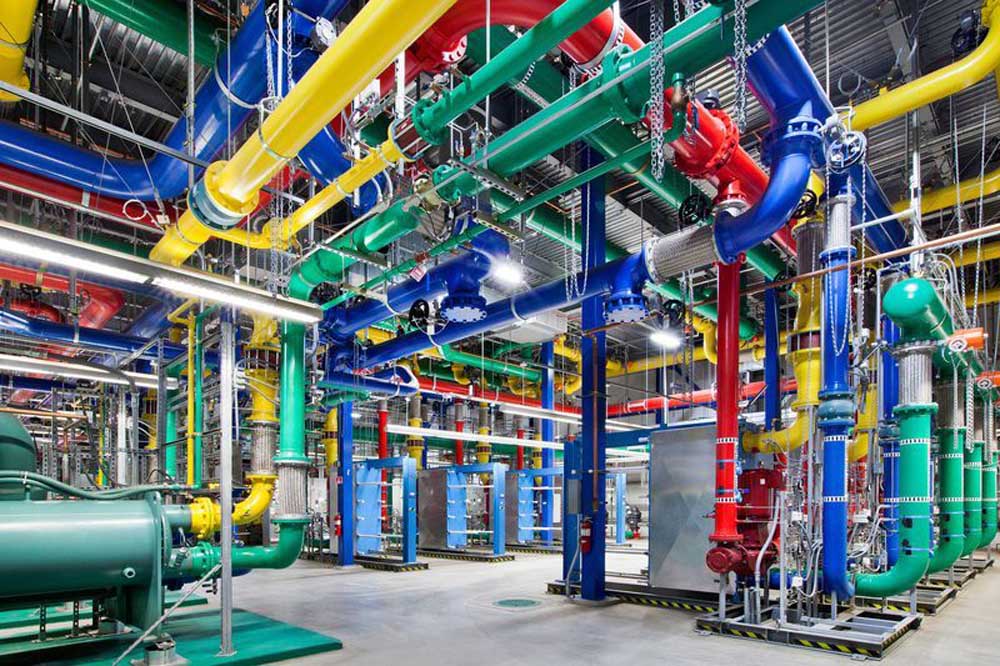Google spinout lands in Oregon to suck carbon out of the air, fight climate change
Published 11:22 am Thursday, May 23, 2024

- The colorful pipes are responsible for carrying water in and out of a Google data center in The Dalles. The blue pipes supply cold water and the red pipes return the warm water back to be cooled.
A squat, metal-clad building in The Dalles looks like the sort of thing you’d find in any industrial park. Networks of pipes, tanks and yellow stairways within are standard factory fare.
But this facility is built specifically to undo what other factories have done.
Trending
A Silicon Valley startup called 280 Earth has begun sucking carbon out of the air from a site overlooking the Columbia River, hoping to demonstrate it has a new technology for fighting climate change. Spun out from Google, 280 Earth has already spent $13 million at the site and plans to spend $7 million more as it builds out the testing phase of its project.
Located next door to one of Google’s riverfront data centers, 280 Earth hopes to use “waste heat” from its neighbor and corporate cousin to power its own operations. It’s also hoping to win some of the same tax breaks Google’s data centers enjoy.
On Monday, 280 Earth announced it has raised $50 million from private investors to continue developing its technology. If things go well with its initial tests, 280 Earth could spend $130 million more in The Dalles in the coming years.
The company hopes to prove its carbon capture technology is commercially viable and begin attracting bank loans and more outside financing so the company can begin pulling in carbon on a massive scale.
“That’s when the breakthrough occurs,” said CEO John Pimentel. “We believe it will happen literally in the next few years. And that’s why we’ve invested in The Dalles, is trying to break through that early-stage exploration.”
280 Earth’s name refers to 280 parts per million, the concentration of carbon dioxide said to have been in the atmosphere before the industrial revolution. That concentration is more than 400 parts per million now and climbing, thanks to ongoing carbon emissions.
Trending
Climatologists forecast the elevated carbon dioxide already in the air will continue warming the planet for millennia. So some have come to believe people need to do more than just reduce carbon emissions. They say people should also be trying to undo some of the damage humans have already done to the atmosphere.
“We have to do everything we can,” said Portland State University geology professor Jonathan Fink.
Carbon capture work like 280 Earth is trying remains commercially unproven, he said.
It’s analogous to where solar or wind power were decades ago, and Fink said it’s too soon to know what techniques are most effective and economically viable.
“I don’t have a clear picture of what this is going to end up looking like, but I do understand how every other technology has needed to evolve slowly at first,” Fink said. “I’m hopeful this will be part of the solution.”
It’s a process fraught with unproven ideas and major drawbacks. Taking carbon out of the atmosphere is itself an energy-intensive process. And then there’s the problem of what to do with all that carbon once it’s no longer floating around in the air.
280 Earth says it has developed a proprietary material, a dry sorbent, that can absorb carbon from the air at lower temperatures than other technologies.
And it says it can use heat generated by Google’s data centers so 280 Earth can limit its own energy use. As a byproduct of its process, 280 Earth also captures water from the atmosphere that can then be used locally.
If its technology works in The Dalles, Pimentel said 280 Earth envisions building modular sites next to large industrial operations all over the country, using heat from those operations to recapture carbon.
280 Earth takes on the expense of moving the waste heat from adjoining facilities to its own, reducing what those other operations spend in money and energy on their own cooling.







